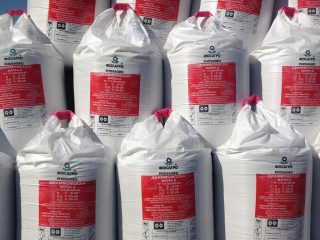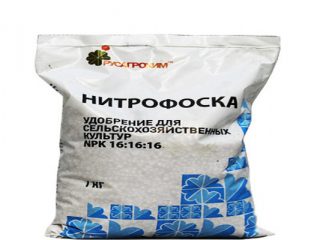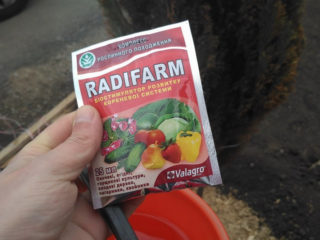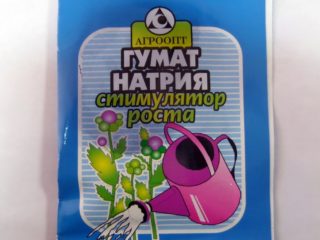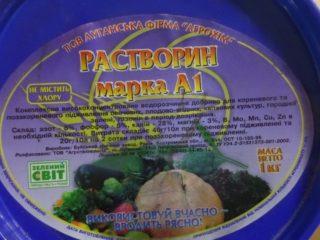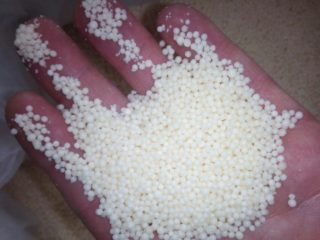Content
- 1 Is it possible to fertilize a garden with pig manure?
- 2 The value and composition of pig manure
- 3 What are the benefits of pig manure for soil and plants?
- 4 Pros and cons of using pig manure in the garden
- 5 Types of pig manure
- 6 Rules for processing pig manure
- 7 How to Apply Pig Manure as Fertilizer
- 8 Can fresh pig manure be used as fertilizer?
- 9 Rules for the use of pig manure
- 10 How to distinguish pig manure from cow manure
- 11 Conclusion
- 12 Reviews of pig manure as fertilizer
The use of pet excrement as a means of increasing soil fertility is a known and well-established practice. Organic matter is well absorbed by plants and is an excellent alternative to mineral complexes, but some of its types should be used as fertilizer with extreme caution. One of these fertilizers is pig manure, which can only be used after preliminary preparation.
Is it possible to fertilize a garden with pig manure?
Pig manure is a valuable organic fertilizer, but it cannot be used fresh in the garden.Due to the peculiarities of metabolism in the body of pigs, the fresh excrement of these animals contains a huge amount of nitrogen in the form of ammonia compounds. Once in the soil, the fertilizer will simply burn all the plant roots. In addition, it has a strong acidic reaction, which also negatively affects the quality of the fertile layer. If the soil already has high acidity, then the addition of such fertilizer will make it completely unsuitable for many types of plants.
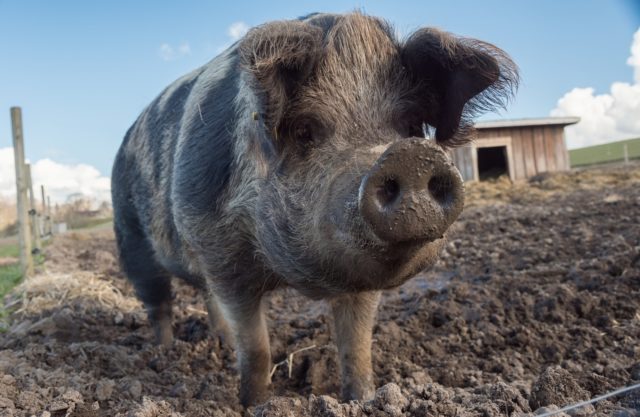
Each adult pig produces 8-12 kg of manure daily
In addition, such manure is characterized by the following negative qualities:
- Long decomposition time.
- Low calcium content.
- Weak heat transfer.
- The presence of weed seeds and helminth eggs.
Despite all the disadvantages, it is still possible to use pig manure as fertilizer. However, before this you need to carry out certain manipulations with it.
The value and composition of pig manure
Due to the different feeding diets of domestic animals, their excrement also has significant differences in the content of substances beneficial to plants. Here is an approximate composition of microelements that are found in pig feces:
Microelement | Content, % |
Potassium | 1,2 |
Phosphorus | 0,7 |
Nitrogen | 1,7 |
Calcium | 0,18 |
The table shows that this fertilizer contains a large amount of nitrogen. It should be noted that 80% of the nitrogen compounds included in its composition can be directly absorbed by plants. In addition, there is a good concentration of phosphorus, but potassium and calcium are much less than in other types.
What are the benefits of pig manure for soil and plants?
Like any other organic fertilizer, pig manure enriches the soil with easily digestible nutrients that plants need for normal growth and development. Nitrogen promotes the growth of shoots and the growth of green mass, potassium and phosphorus are necessary for normal flowering and fruiting, and these elements also strengthen the immunity of garden crops.
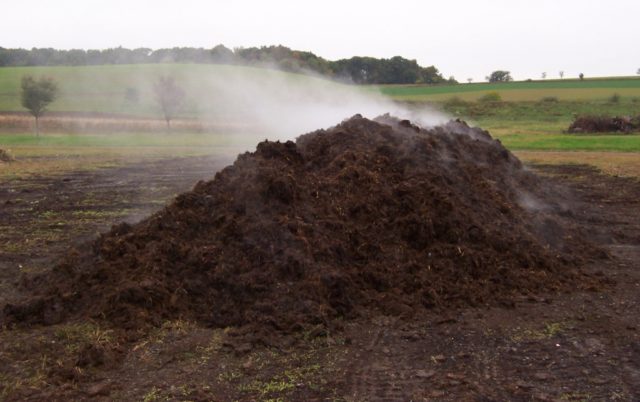
Pig feces can be used as organic fertilizer
Pig excrement, especially when mixed with bedding straw, attracts a large number of earthworms, which improve the structure of the soil, loosen it, and help build up a layer of humus.
Pros and cons of using pig manure in the garden
Using pig excrement as an organic fertilizer can bring many benefits, especially for nitrogen-loving plants. Such crops include eggplants, potatoes, peppers; you can add this organic matter to fast-growing bushes, for example, blackberries or raspberries. The procedure for grapes gives excellent results. However, its use has a number of significant disadvantages:
- Due to the high content urea fertilizer has a strong acidic reaction, and this worsens the properties of the soil.
- Weed seeds and helminth eggs contained in excrement can infect the area.
- When fresh, manure has an extremely unpleasant odor; not everyone can work with it without a respirator.
- Nitrogen in pig feces is contained in the form of slowly decomposing ammonia compounds.
- Application of pig manure significantly increases soil acidity
Types of pig manure
Depending on the period of time spent in the open air, pig manure is usually divided into several categories:
- Fresh. The period of exposure to air is no more than 3 months.
- Half-rotted. The age of excrement is from 3 months to six months.
- Rotten. This one stays outdoors for 0.5 to 1.5 years.
- Humus. His age exceeds 1.5 years.
Fresh manure
As a rule, fresh pig manure in its pure form is not used at all for feeding in the garden. It is too dangerous due to its high ammonia and acid content. Applying such fertilizer will not only not bring any benefit, but will also spoil the soil and destroy the plants.
Half-rotted is less dangerous, however, the concentration of harmful substances in it is still quite high. An additional risk is posed by weed seeds and helminth eggs, which will not lose their viability after six months. Typically, half-rotted manure is applied before winter so that its final decomposition occurs during this period.
Rotted pig manure
Rotted pig manure loses part of its original volume due to moisture evaporation. The concentration of nitrogen and acid in it is reduced to an acceptable level, so it can already be used to feed fruit trees, berry bushes, tomatoes, and potatoes. It is advisable not to exceed the fertilizer application rate, which is 7 kg per 1 sq. m. m. It is applied in the fall, usually before plowing.
Humus
After aging for 1.5 years or more, pig manure turns into humus, completely losing all its negative properties.The weed seeds contained in it lose their viability, and helminth eggs lose their viability. This fertilizer is complete and can be used throughout the season, but to achieve the best results it should be combined with cattle, horse or rabbit manure.
Rules for processing pig manure
The best way to process pig manure to turn it into a complete fertilizer is composting. The essence of this method is to lay excrement in layers, between which grass, fallen leaves or straw are placed.
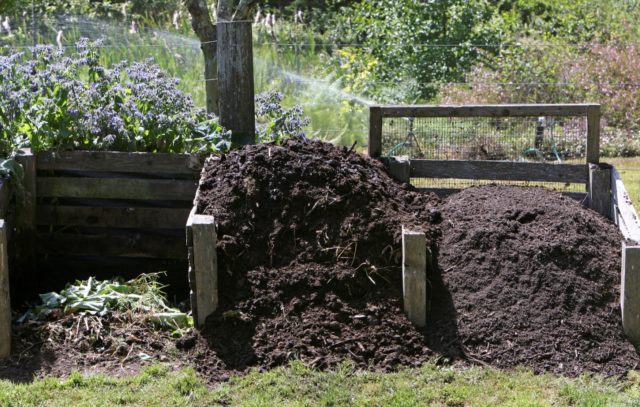
A compost pit will help turn pig manure into complete fertilizer.
Inside such a “layer cake,” accelerated processes of decomposition of organic residues occur, which is accompanied by a significant increase in temperature. Under such conditions, pig manure is disinfected, weed seeds lose their viability, and pest larvae and helminth eggs simply die.
To lay compost, it is better to dig a special hole, which can be gradually filled with both excrement and plant debris.
The compost pit should not be made too deep. Otherwise, the lower layers will not overheat, but will rot due to lack of oxygen. It's better to make it wider. After filling the pit, you need to wait about 1 year until the compost is completely ripe. The readiness of the fertilizer for use is determined by its color and smell. Completely rotted compost has a dark brown color and a loose crumbly structure. The unpleasant odor characteristic of fresh feces should be completely absent from the finished fertilizer.Ripe compost smells of earth or has a slight aroma of sweetness.
How to Apply Pig Manure as Fertilizer
In the garden, pig manure can be used for a variety of purposes. In composted form, it is used to increase soil fertility, improve its structure, loosen clay areas, and attract worms. Ready compost can be used as mulch. In combination with the excrement of other animals, it is suitable for creating “warm” beds.
To restore soil structure
To increase looseness and improve soil structure, it is advisable to use litter manure, which includes straw or sawdust. These porous materials additionally loosen the soil and increase its breathability.
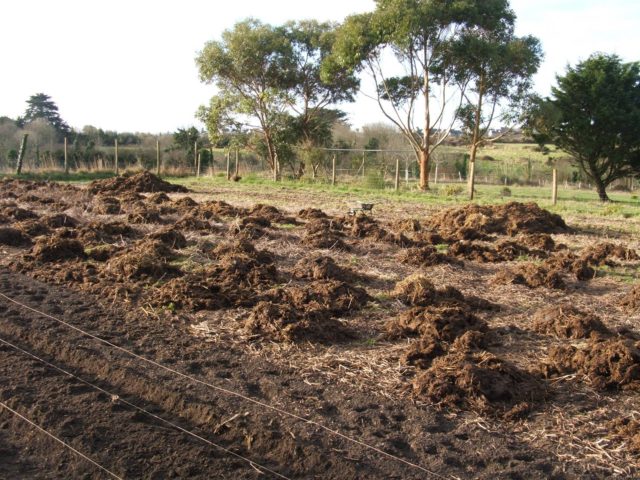
The best way to use pig manure is to apply it under digging.
This fertilizer is usually used in spring or autumn, scattering it over the surface before plowing or digging the area.
To enrich the soil
The microelements contained in the fertilizer can significantly increase soil fertility. This is especially true for plants that are sensitive to nitrogen deficiency; it is for them that fertilizing will be especially useful.
The greatest efficiency from application can be obtained by combining pig manure with others, especially horse and rabbit manure. This fertilizer contains all the microelements necessary for plants. At the same time, you need to remember the negative properties and take the necessary measures to level them out.
For mulching
Fresh or half-rotted pig manure cannot be used as mulch. Any contact with it will lead to burns or death of the plant, since this is tantamount to introducing a lethal dose of urea.Only fully matured compost can be used for mulching, and even then direct contact should be avoided.
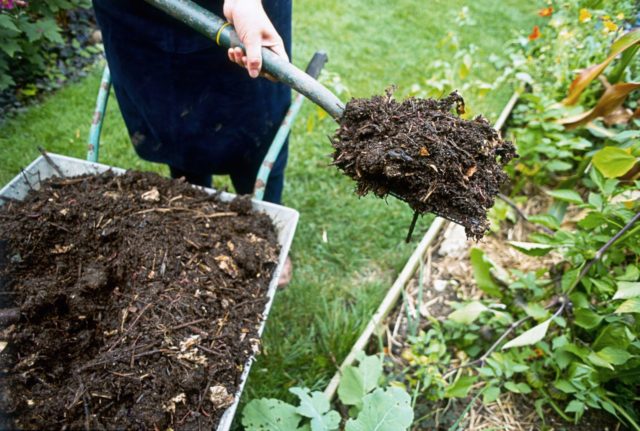
Compost from completely rotted manure can be used to mulch the soil.
A layer of this fertilizer can be used to cover the root zone of, for example, a fruit tree, but the mulch should not come into contact with its trunk.
For heating beds
Pig manure is a “cold” type. Due to the slow rate of decomposition, it practically does not cause an increase in temperature, so it is useless to use it in its pure form for arranging “warm” beds. The desired effect can be achieved only if it is used in combination with horse or rabbit.
Can fresh pig manure be used as fertilizer?
Fresh pig manure is used as fertilizer only as a last resort. If the situation is hopeless and there are no other fertilizers, then everything must be done to reduce the levels of ammonia and acid in it. To do this, it is mixed with other species (primarily horse or rabbit), and additional lime or chalk is added to reduce acidity.
Rules for the use of pig manure
There are several ways to use pig manure as garden fertilizer. The most common is composting followed by adding it to the soil to improve the structure of the soil and increase its fertility. It can also be used for feeding in the form of a water infusion, to which lime is added to reduce acidity.Such fertilizers are applied only into special grooves or ring-shaped depressions in the root zone of trees; liquid should not be allowed to get on the trunk and foliage.
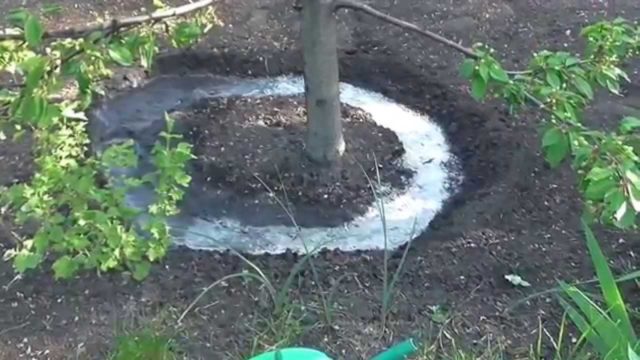
Liquid fertilizer is applied only to the annular grooves
Another way to use pig manure is to burn it. In dried feces, both weed seeds and the larvae of various parasites contained in fresh excrement are completely destroyed. All minerals are preserved in the resulting ash; this fertilizer can be used in the future without any restrictions, applied to the soil at the rate of 1 kg per 1 sq. m. m.
How to distinguish pig manure from cow manure
You can distinguish pig manure from cow manure by several signs, both visual and laboratory:
- Pork has a sharp, unpleasant odor, in which the presence of ammonia is felt.
- Cattle feces contain only plant components and a small amount of grain; pig feces may contain feed residues and particles of animal feed.
- Cow's milk retains its homogeneity longer, while pork's has a rapid breakdown into solid and liquid fractions.
- The acidity indicator will show a much stronger acidic reaction in pork.
Another way to distinguish cattle manure from pork manure is price. For a conscientious seller, the latter will always cost less than any other, since it has the lowest utility coefficient.
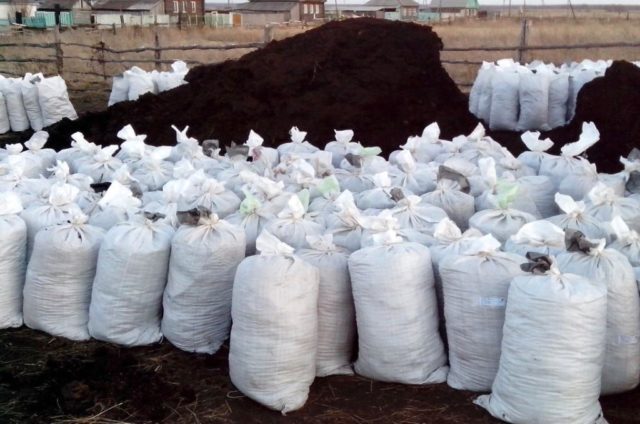
Fraud in the sale of manure is by no means a rare occurrence.
Unfortunately, there are a lot of cases when one type is passed off as another or different options are simply mixed. Therefore, an announcement like: “I will sell cattle manure” from a farm engaged exclusively in breeding pigs should definitely raise alarm bells.
Conclusion
Pig manure can become a normal organic fertilizer, but it takes time. It is best not to use it until it turns into full-fledged compost, and this will take at least 1.5-2 years. However, if everything is done correctly, then after this time it will become an excellent fertilizer, the use of which will significantly increase soil fertility and increase the yield of the garden.
